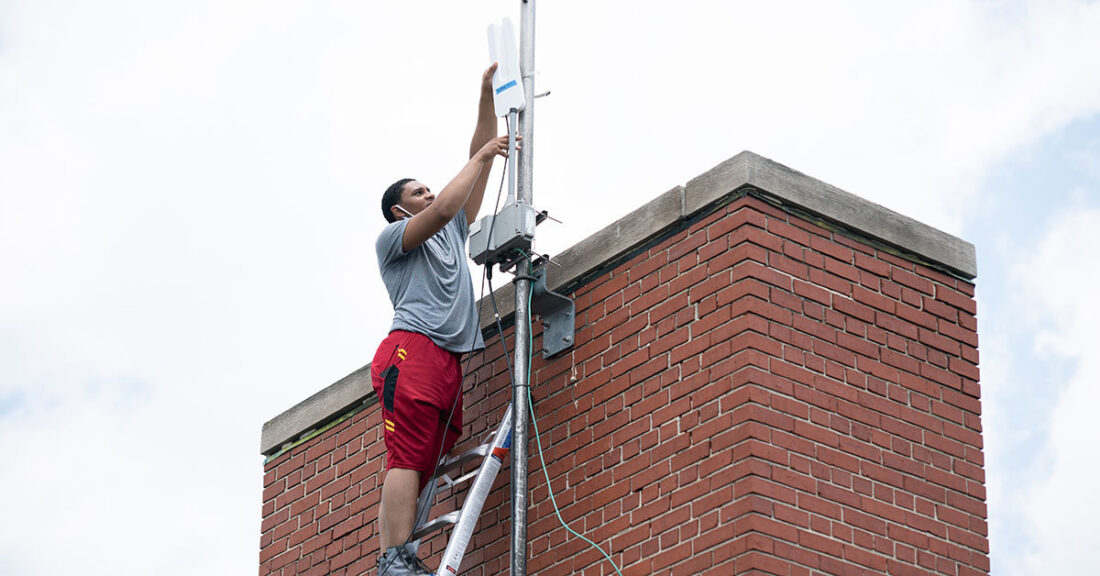Providing Internet Access to Communities of Color in Baltimore

As the world moved virtual due to the COVID-19 pandemic, Alexandria Warrick Adams — who runs the nonprofit Elev8 Baltimore — heard on repeat about families and youth who were struggling to access the internet.
In Elev8’s hometown of Baltimore, a disproportionate share of these families live in Black communities and include young people participating in remote learning and programming. To bridge this digital divide, the nonprofit — which partners with schools to offer various youth and family services — took matters into its own hands.
In June 2020, Elev8, teamed up with local tech company Rowdy Orb.it as well as the Internet Society’s Washington D.C. Chapter and other partners to bring free and open WiFi hotspots to primarily Black communities. With support from the Annie E. Casey Foundation and other funders, Elev8 and its partners plan to add two more hotspots throughout the city.
“This is an opportunity to fill a valuable need,” says Warrick Adams, Elev8’s executive director. “The COVID-19 pandemic has brought a lot of stress to Baltimore families — many of whom are facing job and wage losses, threats of eviction and other adverse circumstances. At minimum, Baltimoreans shouldn’t have to worry about accessing the internet right now in our much more virtual world.”
Providing job opportunities for youth, community members
As part of the project, the partners hired community members and youth who participated in local workforce and educational programs to help configure and install the hotspots. “Through this work, young people interested in careers in technology have gained key experience and built up their technical skills,” says Jonathan Moore, CEO of RowdyOrb.it. “This will help them on their paths to gaining full-time employment and key credentials.”
Some community members are also working with RowdyOrb.it to assist residents who need help connecting to the internet or have other technical issues. As the partners expand WiFi to more areas, they’ll hire more people for these roles in hopes of establishing worker cooperatives to help manage the services, says Moore.
A matter of civil and human rights
It’s no accident that Black Baltimoreans and other residents of color are less likely to have internet access compared to white people in the city, says Warrick Adams.
“We see installing these hotspots as an act of resistance to the status quo,” Warrick Adams says. “We’re in a virtual environment, where technology is vital to accessing employment, education, health care and other key services. It becomes a human and civil rights issue when large segments of our communities cannot access necessary technology to participate in these key activities.”
The Casey Foundation has made a number of investments to help decrease the digital divide in Baltimore. For instance: Casey supported the city school system’s efforts to expand student access to computers and the internet, since all grades are learning remotely during the COVID-19 pandemic. The Foundation also committed to funding part of a director position for the Baltimore Digital Equity Coalition — a network of 60 organizations that aims to increase digital access to city residents, especially those of color.
“Even before the COVID-19 outbreak, the digital divide held communities of color back,” says Gena O’Keefe, a senior associate with the Foundation. “The pandemic has underscored the importance of system and community-led efforts to expand digital access with an explicit end goal of promoting equitable outcomes. We’re glad to see such efforts also helping young people gain valuable skills that can potentially lead to family-sustaining wages.”
Learn about a Baltimore youth workforce program that went nearly entirely virtual this year





